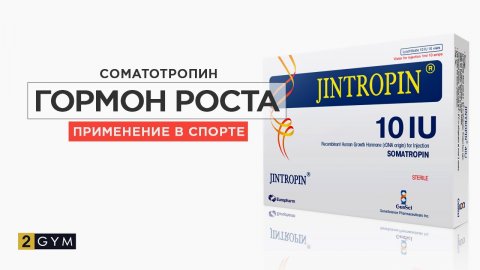The bioavailability of IGF-1 is influenced by insulin-like growth factor binding proteins (IGFBP). The levels of IGF-1 expression vary depending on a number of clinical conditions, suggesting that it can provide important information about a person's health.
IGF-1 is also a popular doping agent in sports and has been involved in several high-profile doping cases in recent years.
However, the existence of insulin-like growth factor binding proteins significantly reduces the levels of immunoreactive IGF-1 in samples and requires several stages of pre-treatment, complicating the interpretation of laboratory analysis results.
General Information
Insulin-like growth factor-1 (IGF-1) is a single-chain peptide consisting of 70 amino acids with a molecular mass of 7.6 kDa. As the name suggests, IGF-1 is structurally similar to insulin and can bind to the insulin receptor, although with lower affinity compared to the insulin-like growth factor receptor (IGF-1R).
The production and release of IGF-1 are stimulated in response to the release of growth hormone into the bloodstream, which is synthesized by the anterior pituitary gland. Subsequently, IGF-1 binds to the IGF-1R receptor present on the surface of almost every cell in the body.
IGF-1R consists of two alpha and two beta subunits linked by disulfide bonds. Each transmembrane beta subunit has intracellular tyrosine kinase domains that are activated when IGF-1 binds to the extracellular alpha subunits.
Activation of these kinase domains leads to the activation of several signaling pathways, ultimately preventing apoptosis and promoting cell growth and survival. [1]
IGF-1 mainly acts as an endocrine hormone, predominantly secreted by the liver and delivered to target tissues. It is also produced by other tissues, where it acts locally in a paracrine manner and is believed to play an important autocrine role in oncology. [2]
IGF-1 is a performance-enhancing drug, making it widely used in sports.
History
Insulin-like growth factor-1 (IGF-1) has been known since the 1950s. It was then that the first reports of growth factors appeared. However, it was described as IGF-1 only in 1978 when Rinderknecht and Humbel isolated two active somatomedins from human blood plasma, whose structure was very similar to proinsulin. [7] [8]
Due to their structural similarity and affinity for the insulin receptor, these peptides were named insulin-like growth factors - IGF-1 and IGF-2, and their broad metabolic and mitogenic effects remain the subject of many intensive studies to this day.
Structure
IGF-1, initially described in the scientific literature as a sulfation factor, then as somatomedin C, is a primary peptide consisting of 70 amino acids, while IGF-2 is a slightly acidic peptide consisting of 67 amino acids.
Both are structurally similar to insulin, explaining their ability to bind to insulin receptors and their insulin-like activity [7] [8] [9].
IGF-1 and 2, like insulin, consist of two chains, A and B, linked by disulfide bridges. IGF-1 shows 48% structural similarity to proinsulin and 70% to IGF-2.
Structural differences between IGF-1 and insulin concern their hydrophilic parts. The affinity of insulin and somatomedins for both the insulin receptor and the IGF type 1 receptor is explained by the high homology of their hydrophobic regions [8] [9] [10].
The gene encoding IGF-1 in the human genome is located on chromosome 12. It consists of 6 exons separated by 5 introns. Its transcription occurs from two promoter sites (P1 and P2) located at the 5' end of the two leader exons.
Functions and Biological Significance
IGF-1 has a pleiotropic effect. This peptide exhibits features not only of a classical hormone. It is also known that as a locally produced growth factor, it acts both in a paracrine and autocrine manner in many tissues. [9] [11]
Development and Growth
IGF-1 is present in the cell at an early stage of embryonic development. Apparently, it is a key factor affecting the differentiation and maturation of tissues, while other growth factors often affect cells by regulating IGF-1 expression. [9] [11]
IGF-1 stimulates the enzymatic systems of cells, promoting the growth of soft tissues and bones. It is the main factor mediating the action of growth hormone on target cells, especially chondrocytes, osteoblasts, and endocrine gland cells.
It plays an important role in the increase of bone mass. IGF-1 synthesized in osteoblasts is important for maintaining proper bone density.
It has been proven that IGFBP3 (insulin-like growth factor-binding protein 3) enhances IGF-1 activity in its mitogenic effect on osteoblasts and in the production of type 1 collagen by these cells. [9] [11]
In light of the clinical data obtained so far, the growth of epiphyseal plates in bones is directly stimulated by both growth hormone and IGF-1.
IGF-1 and IGF-2 are essential for intrauterine development. During intrauterine life, the complex of insulin-like growth factor-binding proteins of fetal and maternal origin controls fetal growth.
A positive correlation has been identified between IGF-1, newborn body weight, and their placenta mass [9] [10] [12]. After birth, IGF-1 takes on a dominant role in regulating the growth of the body by increasing the number of cells and expanding the extracellular matrix.
After the completion of growth, insulin-like growth factor-1 is responsible for replacing dead cells and old matrix with new ones. Thus, it plays a key role in connective tissue regeneration.
Central Nervous System
Many authors have demonstrated the multifaceted and beneficial effects of IGF-1 on the nervous system. Studies in patients with amyotrophic lateral sclerosis have shown that this factor prevents the progression of the disease. [13]
It has been found that in patients with Alzheimer's disease, a characteristic feature is the deposition of neurofibrillary tangles and beta-amyloid plaques. Many authors emphasize that insulin-like growth factor-1 reduces the rate of formation of pathological protein deposits, reduces neuroinflammation, and protects neurons from apoptotic death.
Other observations indicate that IGF-1 positively affects nerve tissue regeneration and function.
The results obtained in experimental studies on animals indicate that the delivery of this factor to the cerebrospinal fluid increases the rate of maturation of oligodendrocytes, increases the number of synapses, and reduces the severity of damage to the pyramidal system, contributing to motor improvement. [14]
IGF-1 is believed to increase the differentiation of neuronal progenitor cells.
Both local synthesis of IGF-1 and its availability through the circulatory system have a positive effect on neural growth, functioning, and recovery. Its increased level is associated with the formation of new synaptic connections and the density of dendritic spines. [14]
The Influence of Physical Activity on IGF-1 Levels
Studies have confirmed that an increase in IGF-1 concentration accompanies physical activity. A positive correlation has been observed between physical effort, elevated IGF-1 levels, and increased levels of growth hormone. [15]
It is believed that these changes are a direct result of the adaptive processes occurring in the organism in response to physical exertion and do not necessarily occur in a state of rest. [15]
It is known that growth hormone and IGF-1 are involved in the regulation of glucose metabolism, lipid metabolism, and protein synthesis. These are essential processes related to muscle regeneration and growth, which is crucial in the context of exercise and athletic performance.
Moreover, some studies suggest that IGF-1 may play a role in protecting the cardiovascular system during physical exertion by promoting endothelial function and increasing the elasticity of blood vessels. [16]
However, excessive use of performance-enhancing substances containing IGF-1 can lead to adverse effects, including insulin resistance and metabolic disorders. Therefore, the use of these agents should be approached with caution and preferably under medical supervision.
In conclusion, IGF-1 is an important regulator of many physiological processes in the body. Its levels and activity are influenced by numerous factors, including physical activity, nutritional status, and the presence of certain diseases.
Conclusion
The significant role of IGF-1 in the growth and development of various tissues and organs, as well as in the regulation of metabolic processes, makes it a crucial peptide in the human body.
Its effects on the skeletal system, central nervous system, and overall body growth highlight its broad biological significance. However, its use in sports as a doping agent poses challenges and necessitates careful regulation and monitoring.
Ongoing research into the mechanisms of IGF-1 action and its potential therapeutic applications continues to expand our understanding of this complex and versatile peptide.







